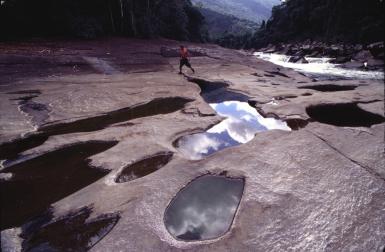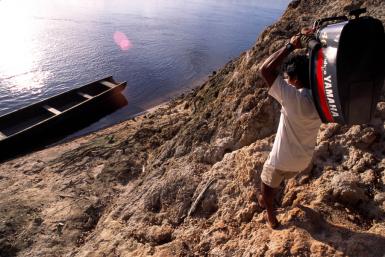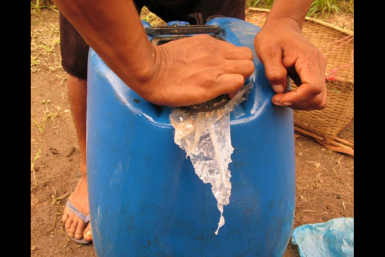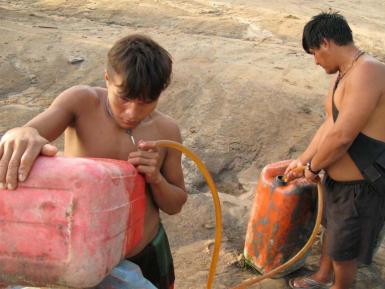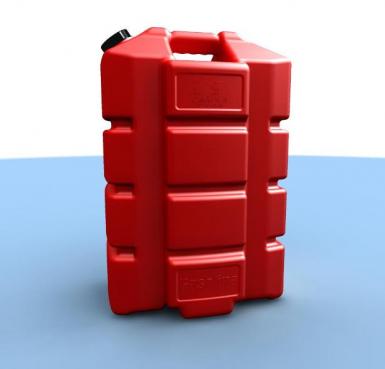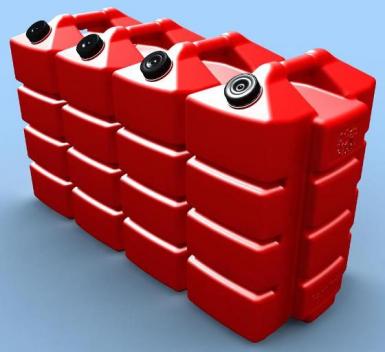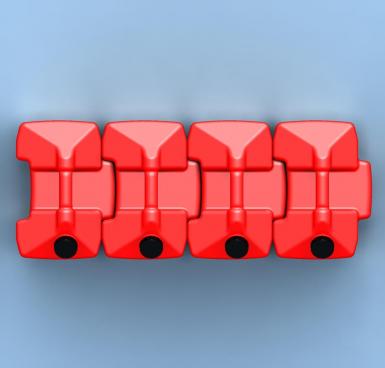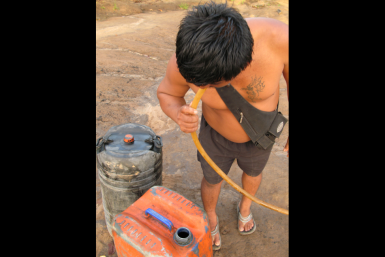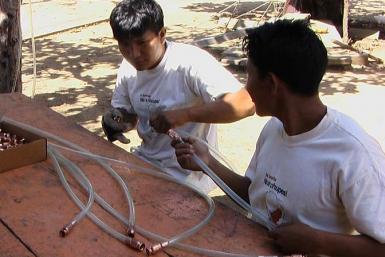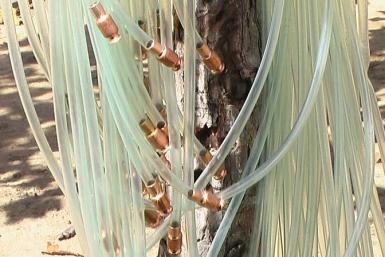Fuel Contamination
The Problem. In rural and wilderness areas around the globe, people spill, breathe and swallow the fuel they buy to power small motors, often far from paved roads. Spillage results from the common use of secondhand containers not designed for transporting fuel. People ingest gasoline and breathe its fumes when they use their lungs to create a siphon to transfer fuel between containers. Millions of children do this every day.
The Solutions. (i) Produce a robust, portable fuel tank with a high quality cap that includes a manually-operated vent and a tether to prevent its loss. Do a volume-for-volume exchange to remove poor quality containers from the field. Long-term, sell subsidized tanks. (ii) Distribute an efficient, existing siphon device that attaches to the end of a hose. This device eliminates use of the mouth and lungs for siphoning fuel.
(1) Fuel Tank. We have designed a versatile 50-liter container. Nothing like it exists on the market: tanks nest to form a block and they have an ergonomic design for strapping and carrying. High-quality caps stop leakage. As a first step, we plan to provide 2,000 of these tanks in the Caura River Basin, Venezuela, to greatly reduce fuel leaks and help safeguard water quality there. We have finished our tank mold in Caracas, Venezuela and plan to begin manufacturing in late spring 2011.
(2) Siphon Device. High daily exposure to gasoline damages human health. Attached to a hose, the compact siphon device is a simple hand-pumped check valve. With a few shakes, a siphon starts flowing. We have distributed hundreds of these devices in the Caura River Basin. They are now widely used there instead of the human mouth.

